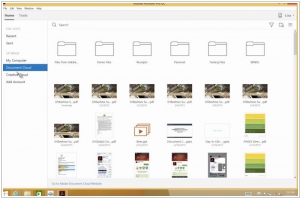Adobe Document Cloud vs DocuSign
September 26, 2023 | Author: Adam Levine
20
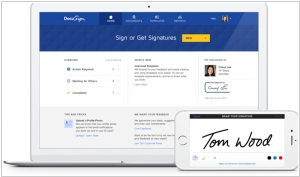
The future of business is digital. DocuSign helps businesses of all sizes easily and securely sign, send, and manage documents in the cloud, with unmatched availability and legal enforceability. Go 100% digital with DocuSign. Securely sign and manage documents online from any device with the most widely used e-signature solution
Adobe Document Cloud and DocuSign are both widely used electronic signature solutions, but they have different focuses and feature sets. Adobe Document Cloud is a comprehensive document management platform that includes electronic signature functionality. It offers features such as PDF editing, document storage, collaboration tools, and seamless integration with other Adobe products. Adobe Document Cloud provides a robust set of tools for creating, editing, and securely managing documents, with electronic signatures being one of its many features. On the other hand, DocuSign is primarily focused on electronic signatures and digital transaction management. It offers advanced features for creating, sending, and tracking digital documents for signature, along with options for automated workflows and integrations with other business applications. DocuSign is renowned for its user-friendly interface, strong security measures, and compliance with legal and industry regulations.
See also: Top 10 Office suites
See also: Top 10 Office suites
Adobe Document Cloud vs DocuSign in our news:
2022. DocuSign announces end-to-end contract lifecycle integration inside Slack
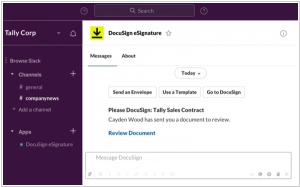
Slack has always excelled in its ability to perform tasks seamlessly, eliminating the need to navigate multiple applications. In 2020, DocuSign introduced electronic signature integration within Slack, which proved especially valuable during the peak of the pandemic. Today, DocuSign announced a significant advancement: the entire contract lifecycle can now be managed directly within Slack. Recognizing the importance of integrating the signing process into the most widely used SaaS tools, DocuSign has been exploring various avenues. This development follows the company's earlier announcement this year regarding document signing in Zoom, another application that experienced a surge in popularity during the pandemic-induced lockdown.
2020. DocuSign acquires Seal Software for $188M to enhance its AI chops
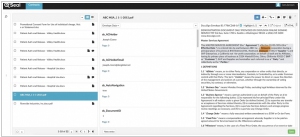
Contract management service DocuSign has announced its acquisition of Seal Software for $188 million. Established in 2010, Seal Software may not be widely recognized, but its clientele includes prominent companies such as PayPal, Dell, Nokia, and even DocuSign itself. These organizations utilize Seal's contract management tools, as well as its analytics, discovery, and data extraction services. It is specifically Seal's AI capabilities, developed over time to assist businesses in contract analysis, that motivated DocuSign to pursue the acquisition. This move aims to significantly streamline processes such as legal reviews, enabling substantial time savings for DocuSign and its customers.
2018. DocuSign filed for IPO
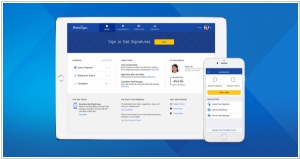
DocuSign, the trailblazer in e-signatures, is preparing for its highly anticipated initial public offering (IPO) within the next six months. By leveraging a commonly used provision of the JOBS Act, DocuSign has confidentially submitted its IPO filing, with plans to unveil it a few weeks prior to its public debut. Similar to Dropbox, which is set to go public this week after years of anticipation, DocuSign, headquartered in San Francisco, has been generating excitement as an IPO candidate for several years. Since its establishment in 2003, the company has successfully raised over $500 million in funding and currently holds a valuation of $3 billion. Notable investors such as Kleiner Perkins, Bain Capital, Intel Capital, GV (Google Ventures), and Dell have recognized the potential of DocuSign and have made significant investments in the company.
2016. DocuSign partners with major payment providers to offer pay at signing
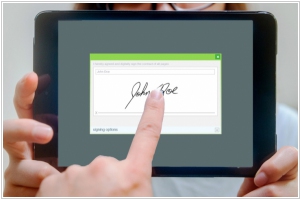
Electronic signature provider DocuSign now offers the ability for users to include a digital payment during the signing process. This feature is particularly valuable for contracts that necessitate an initial payment to proceed. Previously, parties had to handle payment separately from the electronic contract signing, often resorting to phone calls, emails, or traditional mail to collect payment before work could commence or the agreement could be deemed official. The introduction of this payments functionality enables parties to conveniently arrange payments upfront, resulting in a streamlined process overall.
2015. Electronic signature platform DocuSign raises $233M
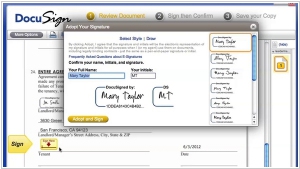
DocuSign, a renowned company recognized for its electronic signature platform, has successfully secured a funding of $233 million. DocuSign stands as one of the market leaders and a globally accepted standard for electronic signatures. Its electronic signature platform is the largest and fastest-growing in the world, empowering businesses to swiftly and securely complete transactions online, while enhancing compliance and reducing costs. Unlike sluggish and costly document management systems, DocuSign's cloud computing-based electronic signature platform serves as a comprehensive replacement. The CEO of DocuSign has outlined three primary objectives for the company: to expand its revenue, make progress towards profitability, and establish its global identity standard. To achieve these goals, a portion of the newly acquired capital will be allocated towards facilitating international expansion.
2015. DocuSign acquires digital signature provider CoSign
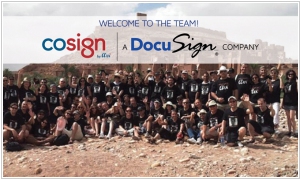
DocuSign has announced its acquisition of ARX, building upon their successful three-year business partnership. This collaboration brings together ARX's exceptional CoSign digital signature technology with DocuSign's leading Digital Transaction Management (DTM) platform, enabling customers worldwide to conduct business transactions with complete trust and confidence. ARX's CoSign line of products holds crucial compliance certifications, such as NIST's FIPS 140-2 Level 3 and Common Criteria EAL4+, which are highly valued by customers across Europe, the Americas, and Asia. CoSign is extensively utilized by millions of users in heavily regulated industries like life sciences, government and public sector, financial services, healthcare, and engineering. Moreover, the CoSign product line seamlessly integrates with a wide range of systems, including Microsoft Office, Office 365, SharePoint, Nintex, K2, OpenText, Oracle, Alfresco, and more.
2011. Adobe tries to fix its SaaS business with EchoSign acquisition
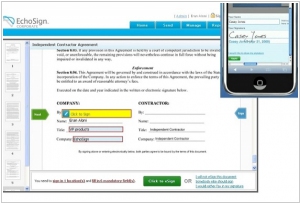
Over the past year, FedEx earned about half a billion dollars on transfering paper documents. It proves that the electronic signature market will continue to grow rapidly. Adobe (aka the giant of the electronic documents space) also understands this. Last week Adobe acquired the most successful electronic signature service - EchoSign. Adobe intends to close its own service eSignatures (which was still in beta) and integrate EchoSign into its SaaS suite Acrobat.com. However, if you look at what Acrobat.com has recently become, this news is likely to be less of a cause for celebration than commiseration with EchoSign’s users and fans. ***
2010. Acrobat.com added kind of shared workspaces
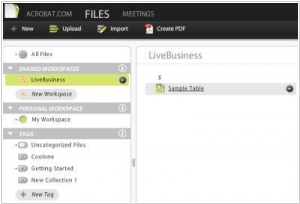
It's time for another round of criticism aimed at Acrobat.com, the online office suite. While our previous review highlighted the introduction of several useful features, the service seems to be making perplexing decisions once again. Despite a promising press release about the addition of online collaboration workspaces, the reality is that they have only included shared folders where users can invite their co-workers or clients for file collaboration. Previously, users could only share individual files, so the extent of the improvements over several months appears to be more focused on public relations rather than substantial enhancements. Furthermore, Adobe seems to believe that online shared folders are in such high demand that they can monetize this feature. Although the cost of the service has not increased, the free version now only allows users to create a single workspace (shared folder), and the Premium Basic plan, priced at $15 per month, is limited to 20 shared folders. Additionally, it's rather peculiar that accessing shared folders on mobile devices, such as Blackberry and iPhone, is not currently supported.
2009. Acrobat.com gets closer to reality
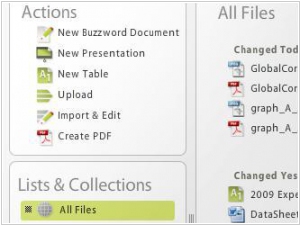
Online office suite Acrobat.com is still like a dress at the fashion show - beautiful, expensive, and you can wear it only on the podium. But in Adobe continues to work hard, update the service and step by step it becomes more ready for business. The other day Acrobat.com added 35 new features. And the first feature we were pleased to see is the idea voting system Acrobat.com Ideas. The main new feature inside the service is the new structure based on file manager. Now, all files are stored in one place and the main menu of service contains only 2 tabs: Files (for file management) and Meetings (for web-conferencing). ***
2009. Adobe is taking Acrobat.com out of beta
Adobe is transitioning Acrobat.com from its beta phase into a paid business service, although the free version will still be available with certain feature limitations. The introduction of two premium plans, available on a monthly or yearly subscription basis, allows users to unlock additional features. The pricing for these plans is set at $14.99 or $39 per month, or $149 or $390 per year, respectively. Alongside the shift to paid accounts, Acrobat.com introduces a new collaborative app called Tables, designed for basic spreadsheet functionality. Similar to Buzzword, Adobe's online word processor, Tables enables multiple users to work on a spreadsheet simultaneously, track revisions, and revert to earlier versions. While Tables may not offer as many features as established online spreadsheet tools, Adobe aims to enhance its capabilities in the future. Additionally, Adobe recently launched a Presentations tool. While Adobe is entering the game later than competitors such as Google, Zoho, and ThinkFree, and with Microsoft poised to join soon, its advantage lies in the deep integration of these products with its other software offerings. However, the potential impact of this integration compared to competing web-only solutions remains uncertain.

